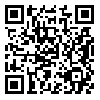Volume 22, Issue 4 (2018)
CLR 2018, 22(4): 119-162 |
Back to browse issues page
Download citation:
BibTeX | RIS | EndNote | Medlars | ProCite | Reference Manager | RefWorks
Send citation to:



BibTeX | RIS | EndNote | Medlars | ProCite | Reference Manager | RefWorks
Send citation to:
Shayegan E, Ghamami M. Procedural Rules from the perspective of Transitional Law;A comparative survey. CLR 2018; 22 (4) :119-162
URL: http://clr.modares.ac.ir/article-20-15447-en.html
URL: http://clr.modares.ac.ir/article-20-15447-en.html
1- Phd. candidate at University of Paris 2, France , es.shayegan@gmail.com
2- Department of Private & Islamic Law, Faculty of Law and Political Science, University of Tehran, Tehran,Iran
2- Department of Private & Islamic Law, Faculty of Law and Political Science, University of Tehran, Tehran,Iran
Abstract: (9820 Views)
Most legal commentaries consider the rule of 'prompt application of new law' as an exception to the traditional doctrine of 'law is prospective and not retroactive' with regards to the procedural rules and conclude that any new procedural law has the retroactive effect. The Iranian Supreme Court opted the same view in its unifying judgment No. 743. However, the prompt application of new law is a part of the rule of 'law is prospective and not retroactive' (as formulated in article 4 of Iranian Civil Code) and cannot be considered as an exception to the latter accordingly. The distinction between the two parts of the rule is to be taken into account: i) law is prospective which refers to the prompt application of new law on all situations of the same nature and ii) law is not retroactive which means the new law would not govern the past legal relations. These topics are mainly discussed in a branch of law called 'transitional law' (Droit Transitoire). In this article the unifying judgment No. 743 of Supreme Court is commented from the view point of transitional law having a view on French legal system for the purpose of comparison.
Article Type: Original Research |
Subject:
Comparative Law
Received: 2017/06/19 | Accepted: 2021/03/8 | Published: 2019/03/15
Received: 2017/06/19 | Accepted: 2021/03/8 | Published: 2019/03/15
Send email to the article author
| Rights and permissions | |
 |
This work is licensed under a Creative Commons Attribution-NonCommercial 4.0 International License. |







